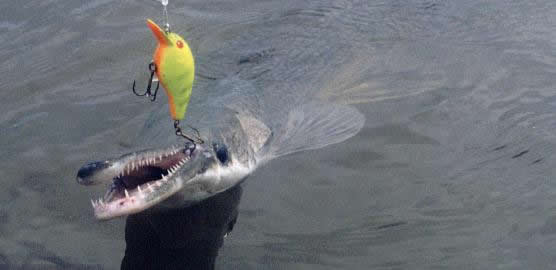
Tropical Gar
by W. P. Meyer


We hear legends. Legends of 12-foot, 1000-pound gar.
The shrouded rainforests and dark waters of Costa Rica are just the place for both legends, and legendary gar, to grow.
So what is the Truth about tropical gar (Atractosteus tropicus)? The Truth is still murky. Gathering trustworthy data regarding local gar species is a challenge; accurate information about foreign gar is almost non-existent. What are needed are more fisheries biologists to research these under-appreciated species. (Your Editor is one willing to leave Chicago and spend winter after winter in single-line-sampling efforts in Costa Rica.)
The information that is available, though brief, is intriguing. Maximum size? Unknown. Clearly they get as big as their close cousins, our alligator gar. Alligator gar of over 300 pounds have been documented. Also like our alligator gar, the numbers and size of the tropical gar have been diminishing mostly due to habitat destruction. Currently in Costa Rica and other Central American countries it not uncommon to land gar of 40-100 pounds.
Like in the US, in Costa Rica there are few guides targeting el gaspar, the gar. One guide experienced in catching tropical gar is Philippe Tisseaux of San Carlos Sportfishing in Los Chiles. He and his guides land hundreds of tropical gar in a season. Fishing Nicaragua Lake, the Rio Frio, Caño Negro, and the San Juan River, they average five gar per outing. The exciting “by-catch” on these outings is often massive tarpon or snook. Gar are caught year round, but fishing seems to be best during the dry season, from January to June. With lower water levels, the gar are more concentrated. The aggressive tropical gar are more than willing to smash a lure or race off with live bait.
Care to land a legend? Take the adventure and travel to Costa Rica to tangle with the legendary tropical gar!